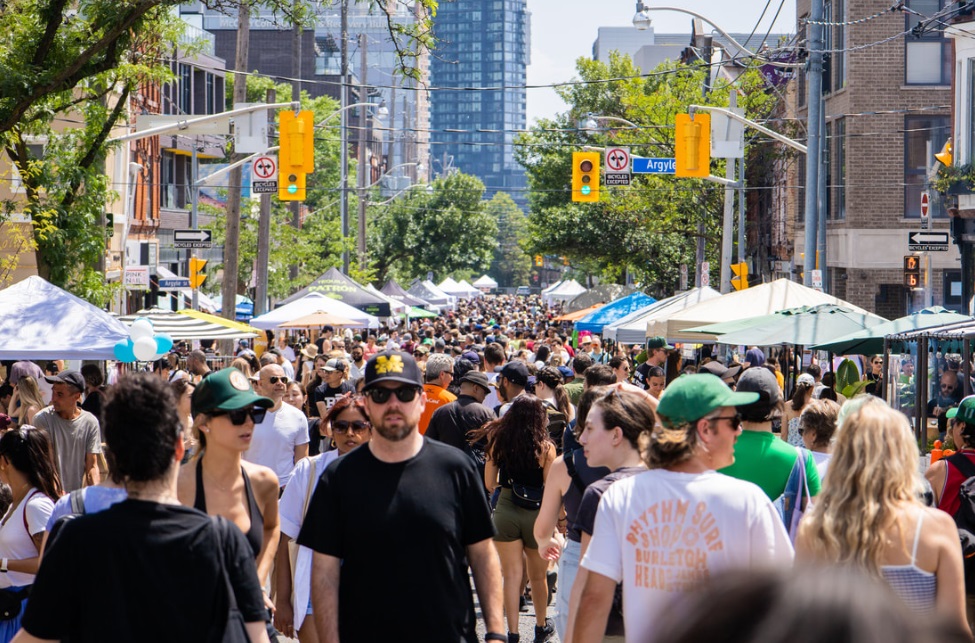What food banks need from you
Posted December 11, 2023 7:09 pm.
Last Updated December 11, 2023 7:17 pm.
The Daily Bread Food Bank’s annual report says 1-in-10 Torontonians now rely on their food banks – double the number from 2022.
With more than 2.5 million food bank visits in 2023, Daily Bread has seen a 154 per cent increase in new clients.
CEO Neil Hetherington calls the increase “absolutely absurd.”
“Every single month, if you fill the Rogers Centre seven times, that’s how many people are having to make use of the food bank … we are serving a meal once every 10 seconds, somewhere around the city,” he says.
“This is going to be the most difficult holiday season in a generation.”
For those looking to donate, Hetherington says Daily Bread’s clients are as diverse as the city itself. Along with staples like pasta, beans and rice, he says people should feel free to donate culturally specific items as well.
“We’re hopeful that people will donate food that they would love to see on their own tables,” he says.
“Maybe there’s something that’s particular to your background that you just find really an enjoyable food, please consider donating and sharing that love with somebody else who I guarantee has that same background and probably misses that food too.”

Vishal Khanna, director of the independent food bank Sai Dham, echoes those sentiments.
“[With Toronto] being so multicultural [the needs are] very variable. Most food banks are facing the same thing – they have different clientele and different people. There are a lot of refugees from different parts of the world – their cultural needs or their food needs are very different than others,” he says.
“So whatever you eat at home – it’ll help the food bank.”
He adds that the smallest of donations can make a difference.
“Even as little as four cans, if you can do it, please do it – because we don’t know that one single can save somebody’s life,” he says.
Julie LeJeune, executive director of the Fort York Food Bank – which receives 80 per cent of its stock from Daily Bread – says they primarily ask the public to donate canned fish and canned or dried beans, making sure they’re not opened or expired.
She also suggests some other items you may not usually think of donating to food banks.
“Everyone needs some kind of cooking oil to be able to cook dinner … because we’re a food bank, we’re providing groceries to people, they’re going home and cooking this,” she says.
“Diapers and wipes – I get asked for that daily. We never have enough. And then also menstrual products.”
However, LeJeune adds that much of what food banks provide is actually purchased in bulk to serve their ever-growing number of clients because food donations from the public only go so far.
“What we need from the public is really financial support because we are purchasing food and we’re purchasing what’s missing in those [donated] items to fill the gap,” she says.
“The products we’re purchasing are to ensure a healthy, nutritious diet and a culturally appropriate diet. So we purchase halal meat, we purchase milk, eggs, produce and then a couple of the canned goods that we’re missing from the regular donations [from the public] … I’m purchasing 1,800 cans of beans so that we have enough for everybody.”
“Please consider donating money,” adds Hetherington.
“We’ve had to go from spending $1.5 million a year on food to $22 million a year on food. We are able to buy it at a deeply discounted rate now, and we’re able to get it out into the community, some 170,000 pounds every single day.”

Khanna says Sai Dham has never organized a fundraising drive in its 11 years of operations, but this year, they need to raise $2.5 million to keep their delivery services afloat and are accepting monetary donations.
“We are open seven days a week, 365 days a year, with 39 routes to go and come and deliver to you. We have our own logistics, our own trucks … it’s a whole distribution channel,” he explains.
“Right now [we need to cover] our day-to-day cost of diesel, our drivers, our logistics, our maintenance.”
Despite the ongoing need for funds, LeJeune says local, community food drives are still a worthy initiative.
‘I think food drives have a place, especially in schools and teaching young kids about giving back and [that] not everybody has food on the table as easily as they might – so I think there’s a purpose for them,” she says.
LeJeune also suggests organizing food drives outside of the festive season, during February and March, when holiday donations run out.
“Poverty is year round,” she says.
“Food drives are a wonderful outward expression of an inward value, and so we appreciate when people do those food drives,” adds Hetherington.
“We’re hopeful that at the food drive they’ll not only collect food and funds, but they’ll have a conversation. They’ll say, why is it that people are having to turn to the daily bread? … and then they’ll talk to their elected official – it doesn’t matter which level of government, it doesn’t matter which party – and say, today is the day to reduce poverty in our city.”








